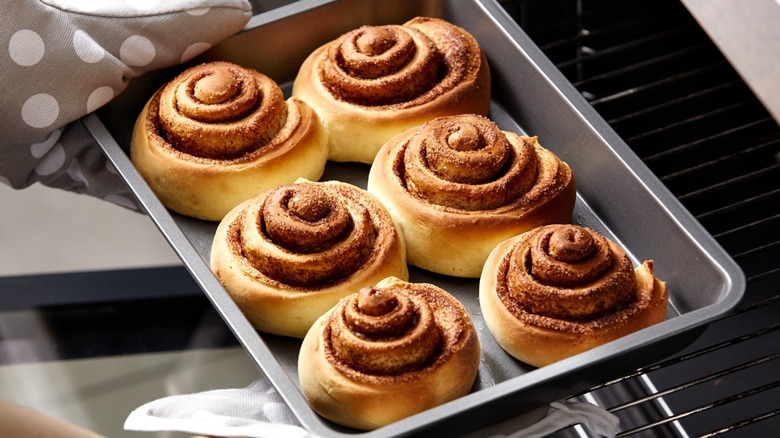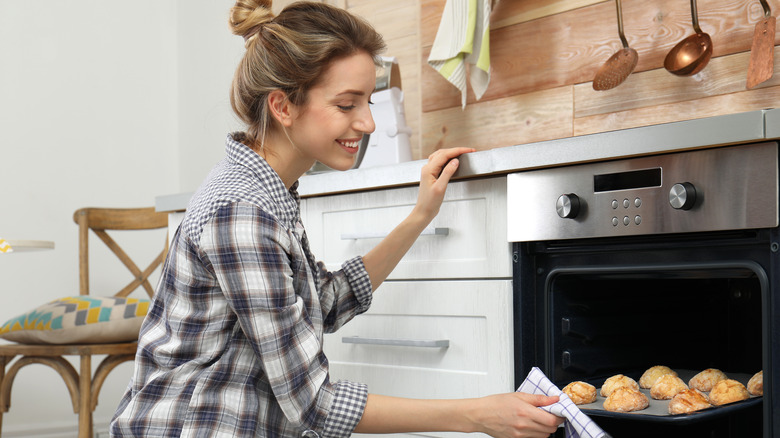The Real Reason You Should Be Rotating Your Pans
If you're like most cooks, there's a good chance you toss your pan into the oven with whatever you're making — a fresh batch of brownie batter, a variety of roasted vegetables, or whatever strikes your fancy — and then don't really check it again until your dish is nearly done and you're trying to gauge whether it can be removed. After all, as Andrew Zimmern dished on "The Rachael Ray Show," every time you open that oven, you lose about 50% of the heat in there, meaning your dish will take far longer to cook, so you don't want to be constantly checking. There's really only one reason you should be opening your oven door during the cooking process — to rotate your pans.
Especially if you have a convection oven, you might assume that the air is circulating perfectly around your food and things are heating up evenly, but that's likely not the reality. Even high-end modern ovens typically have some spots that are a bit hotter than others, per Bon Appetit. This is the reason why sometimes some portions of your baked goods will be perfectly golden, while others might be bordering on too well done, even though they were on the same baking sheet or in the same pan in the oven for the exact same amount of time. In order to counteract this common baking error, you need to rotate your pans to ensure an even bake.
The science behind it — and a few tips
Large pans, such as sheet pans or cookie sheets, have the ability to block some of the airflow in your oven, as Bon Appetit explains. This means that even with modern convection ovens, the air isn't effectively circulating around it. This is also why it's most important to rotate larger pans — there's a bit more leeway with smaller pans, such as cake pans, since the air is better able to circulate (although even dishes in smaller pans can certainly benefit from a rotation). The only items you should avoid rotating, the food publication reports, are ones where it's integral to the dish that the steam created in the oven remains there, such as when you're making cheesecake.
As for when to do it, Cook's Illustrated suggests rotating your pans approximately halfway through the bake time. You'll want to rotate the pan a full 180 degrees, and if you're baking things on different levels, switch them there, too. For example, placing the item baking on the upper rack on the lower rack for the second half of the bake, and vice versa.
Another easy tip from Bon Appetit is to keep your oven mitts or whatever you use to handle your hot pans right by the oven — that way, they'll be easily accessible when that halfway point comes and you need to reach in for a quick rotation.

